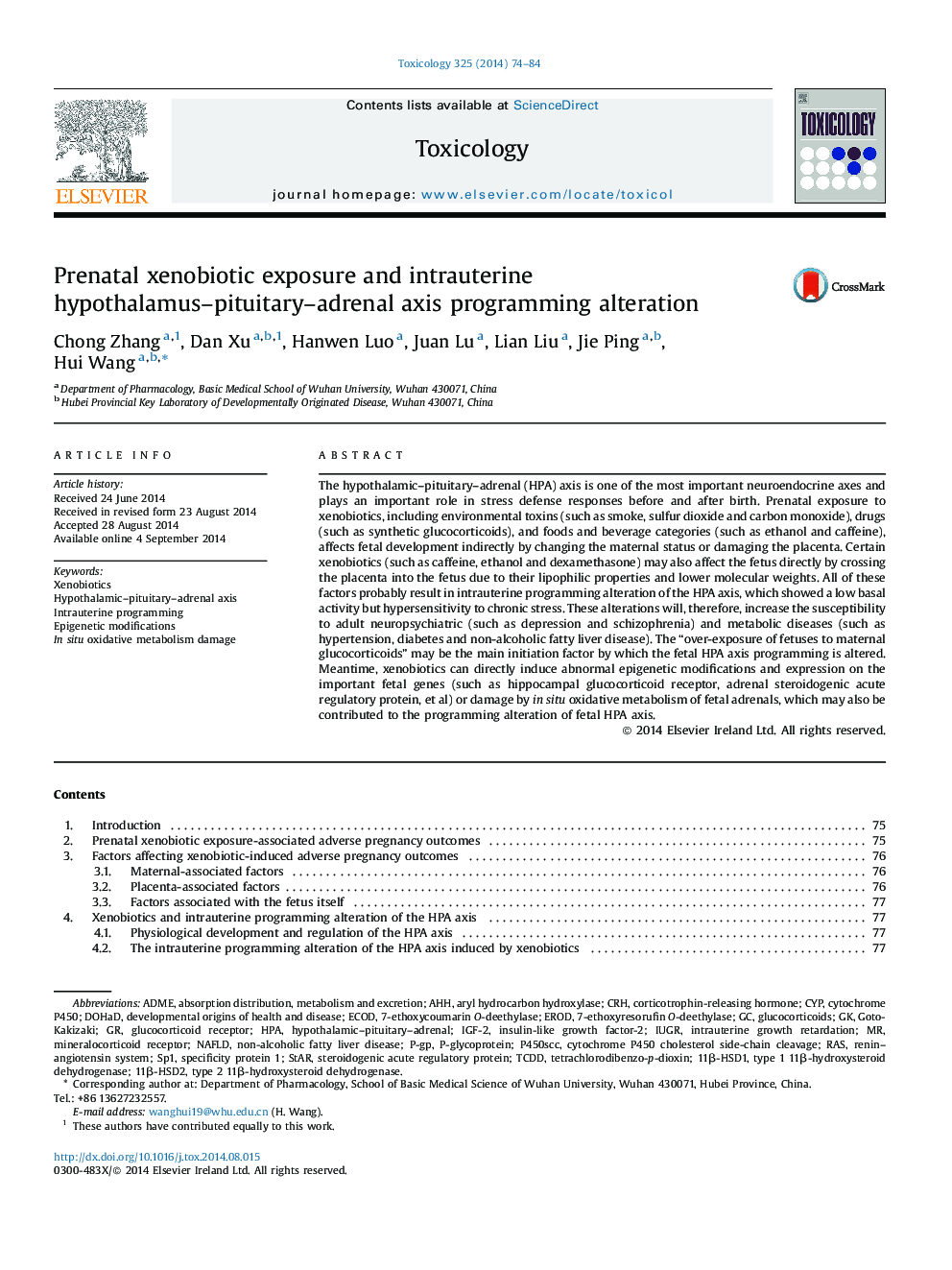| Article ID | Journal | Published Year | Pages | File Type |
|---|---|---|---|---|
| 5859147 | Toxicology | 2014 | 11 Pages |
Abstract
The hypothalamic-pituitary-adrenal (HPA) axis is one of the most important neuroendocrine axes and plays an important role in stress defense responses before and after birth. Prenatal exposure to xenobiotics, including environmental toxins (such as smoke, sulfur dioxide and carbon monoxide), drugs (such as synthetic glucocorticoids), and foods and beverage categories (such as ethanol and caffeine), affects fetal development indirectly by changing the maternal status or damaging the placenta. Certain xenobiotics (such as caffeine, ethanol and dexamethasone) may also affect the fetus directly by crossing the placenta into the fetus due to their lipophilic properties and lower molecular weights. All of these factors probably result in intrauterine programming alteration of the HPA axis, which showed a low basal activity but hypersensitivity to chronic stress. These alterations will, therefore, increase the susceptibility to adult neuropsychiatric (such as depression and schizophrenia) and metabolic diseases (such as hypertension, diabetes and non-alcoholic fatty liver disease). The “over-exposure of fetuses to maternal glucocorticoids” may be the main initiation factor by which the fetal HPA axis programming is altered. Meantime, xenobiotics can directly induce abnormal epigenetic modifications and expression on the important fetal genes (such as hippocampal glucocorticoid receptor, adrenal steroidogenic acute regulatory protein, et al) or damage by in situ oxidative metabolism of fetal adrenals, which may also be contributed to the programming alteration of fetal HPA axis.
Keywords
P450sccNAFLDIUGRGoto-KakizakiECODDOHaDAHHIGF-2P-gp11β-HSD111β-hsd2TCDDCRHCyPADMERASEROD7-ethoxyresorufin O-deethylase7-ethoxycoumarin O-deethylaseP-glycoproteinSp1Tetrachlorodibenzo-p-dioxinEpigenetic modificationsIntrauterine programmingnon-alcoholic fatty liver diseaseXenobioticsDevelopmental origins of health and diseaseStarCytochrome P450Renin–angiotensin systemintrauterine growth retardationInsulin-like growth factor-2hypothalamic–pituitary–adrenal axisSpecificity protein 1HPAcorticotrophin-releasing hormonearyl hydrocarbon hydroxylasehypothalamic–pituitary–adrenalSteroidogenic acute regulatory proteinGlucocorticoidsMineralocorticoid receptorglucocorticoid receptor
Related Topics
Life Sciences
Environmental Science
Health, Toxicology and Mutagenesis
Authors
Chong Zhang, Dan Xu, Hanwen Luo, Juan Lu, Lian Liu, Jie Ping, Hui Wang,
